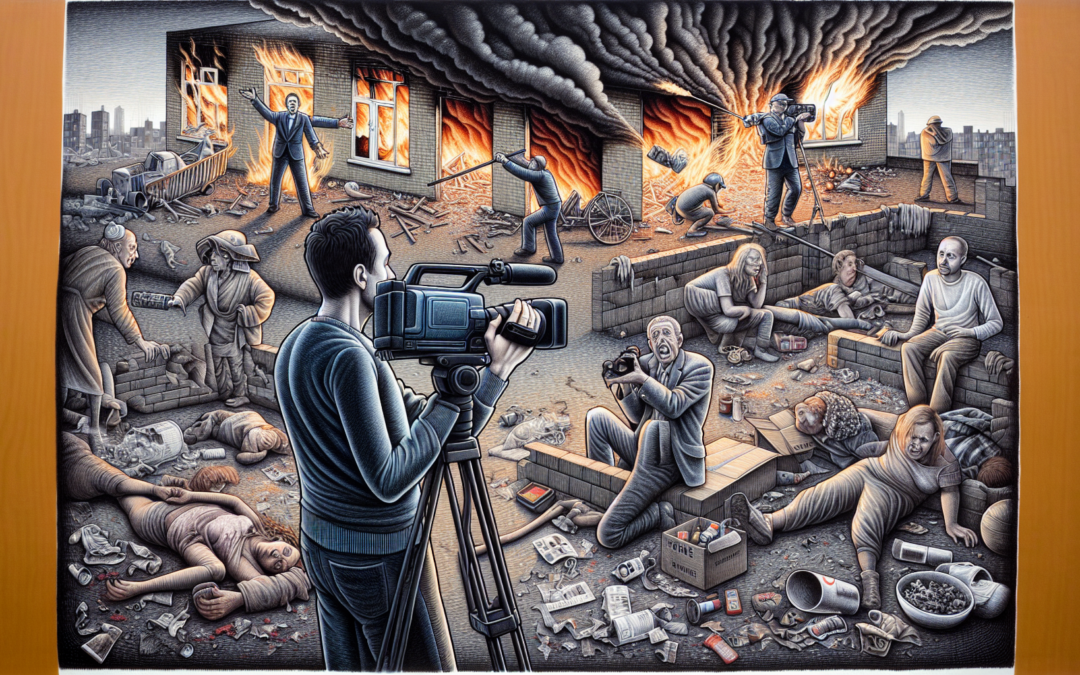The First Amendment Dilemma: A Law Enforcement Perspective
When mentioning the First Amendment, most envision an unassailable fortress protecting free speech and preserving the democratic ideals of a vibrant society. Yet, the on-ground realities paint a painstakingly different picture for those in law enforcement standing watch at the forefront of this debate. In his gripping episode, John Ligato unravels a narrative that encapsulates what officers endure in a modern era where rights and responsibilities fatally collide: Watch here.
Facing the Unyielding Truth
Caught in the crossfire of America’s cultural, legal, and ethical dynamics, law enforcement officers navigate this intersecting terrain with admirable resilience. Allegations of overstepping and harassment consistently follow them, even as they aim to curb behavior that finds itself often, though perhaps wrongly, under the umbrella of First Amendment activities. While their mission is clear—uphold the law and protect citizens—that goal sometimes finds itself challenged in unexpected arenas: public opinion and societal expectations.
When activists or self-proclaimed journalists enter sensitive sites, like disaster zones, it is the officers who are expected to ensure these individuals’ rights are balanced with the dignity and emotional wellbeing of victims involved. While the boundary between free speech and over-exploitation may be glaringly evident, enforcing it requires a deft approach since any overreach could lead to accusations that reverberate far and wide, potentially damaging careers, reputations, and the institutions themselves. For these officers, the calculus is complex: each decision is scrutinized more publicly than ever due to digital platforms rewarding spectacle over substance.
The Tactical Tightrope Walk
It is difficult to stress just how high the stakes are for public officers in ever-present camera lenses, present at every fraction of a second, ready to skew narratives and potentially ruin lives. The pursuit of notoriety via First Amendment auditing places these officers under significant stress. Their rebukes—no matter how justified or legal—could feed viral content, create an adverse image, and invite both uniformed and skewed critiques on their intentions.
In these daring confrontations, officers operate beneath the awareness that each directive or request could impose rippling consequences. When determining whether to intervene, restraint is much more than a guideline—it is a lifeline. Officers rely on tactics honed by experience and continuous training to navigate these complicated conditions that too often lack a prescriptive solution satisfying both public safety and constitutional veracity.
Behind the Badge: Human Stories
Beyond the badge and societal expectancies, each officer stands as a sentinel of peace all too aware of their own humanity. Each has memories of cases gone wrong, opportunities lost due to the push for instant opinions, and unjustified vilification. Despite perceptions, they live within their communities—committed to care for their families and neighbors with quiet determination.
For officers having witnessed the devastation wrought by disasters firsthand, the confrontation with kept “frauditators” generates deep resentment. Seeing lives reduced to props snaps something intensely human in these situational heroes. Across invisible adversaries—technology, deceit— law enforcement resolves for fairness and justice without betraying their emotional deeper selves desperately hoping societal conscience poses timely intervention.
Reimagining Law & Media Relations
Finding hope among contrasting callouts highlights creative paths to redefine operational paradigms surrounding law enforcement-media exchanges. Through evolving policies that unite ethical journalism practices with civil law’s psychosocial sensitivities, there emerges potential blueprints valuing compassion and containment in unprecedented measures yet unexplored.
It is positive here that partnerships between journalists and legal authorities foster trust alongside shared agendas amongst collaborators. Understanding each other’s core predispositions creates methodologies solidifying marks while relinquishing technical ignorance once dividing self-centric, antagonistic collaborations.
Recognizing mutual stakes as custodians of truth should throw off superficial “flash and fluff,” choosing seasoned truthfulness over marketing glory through inclusive harmonies animating relevant truth endeavors together.
Engage with The Dialogue
In understanding this melee where digital and physical worlds meet at impasses between constitutional assertions and moral courage, context demands dialogue. The John Ligato Show engenders such a cooperative opportunity to author enduring transformations bolstered on multiple inventive conversations forefronted here and where meaningful solutions animate guidance fostering reliable community allies responding humanely for collective growth emphasizing respect towards life legacies tamping complexity fundamentally ingrained negatively when diffused violently disoriented ratios parrying goal-directed heartlands unravelling corrupted conveniences mutual ambition.
Finally, follow and support the initiative to foster clarity and solutions, placing squarely on issue-resolution priority lists over tragic tolls mounting unjustly: Join the conversation.

Recent Comments